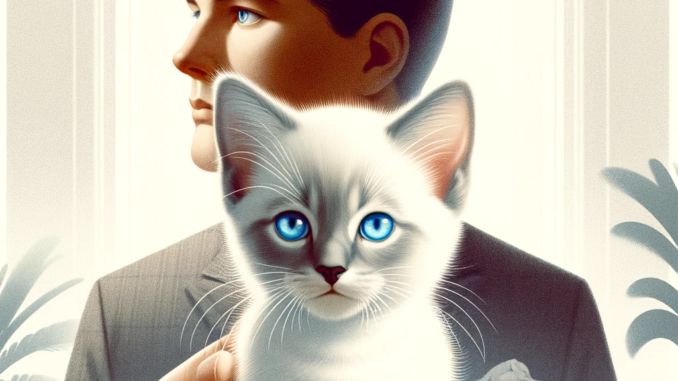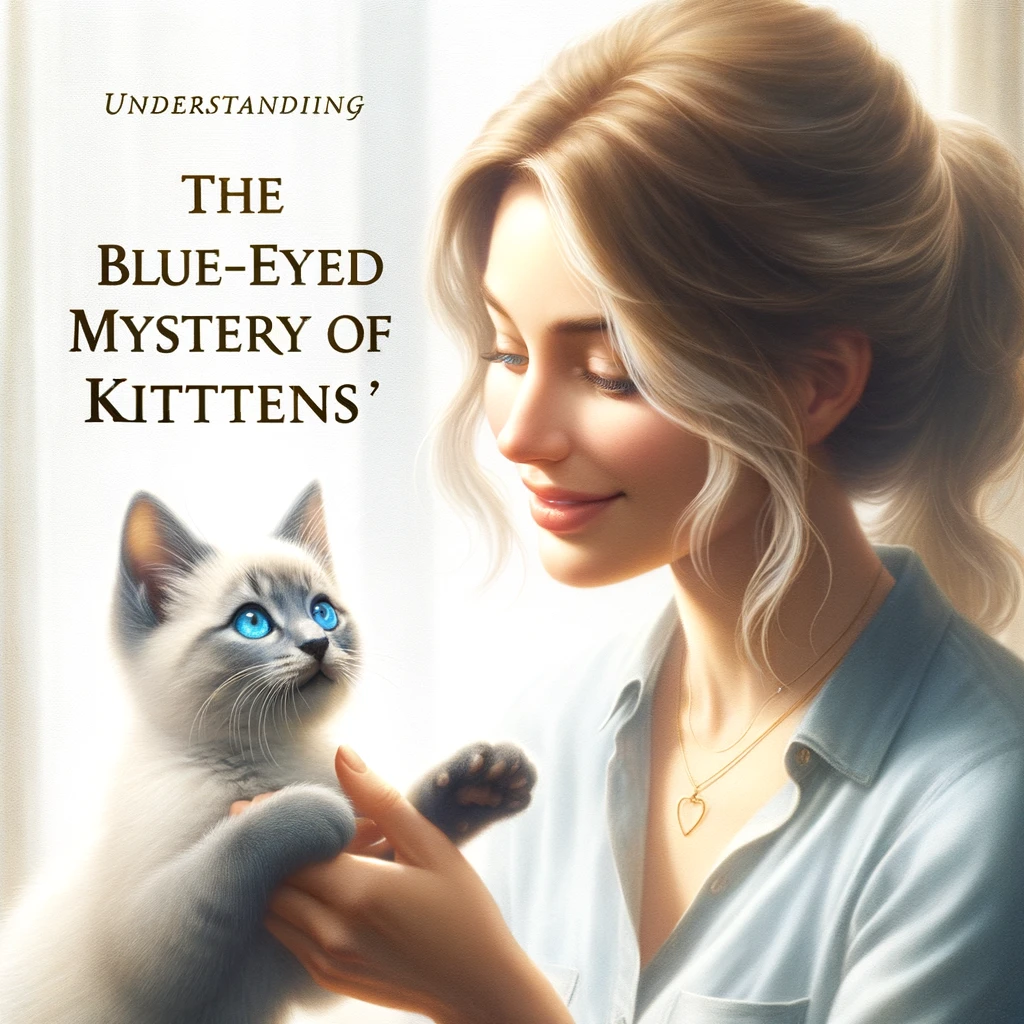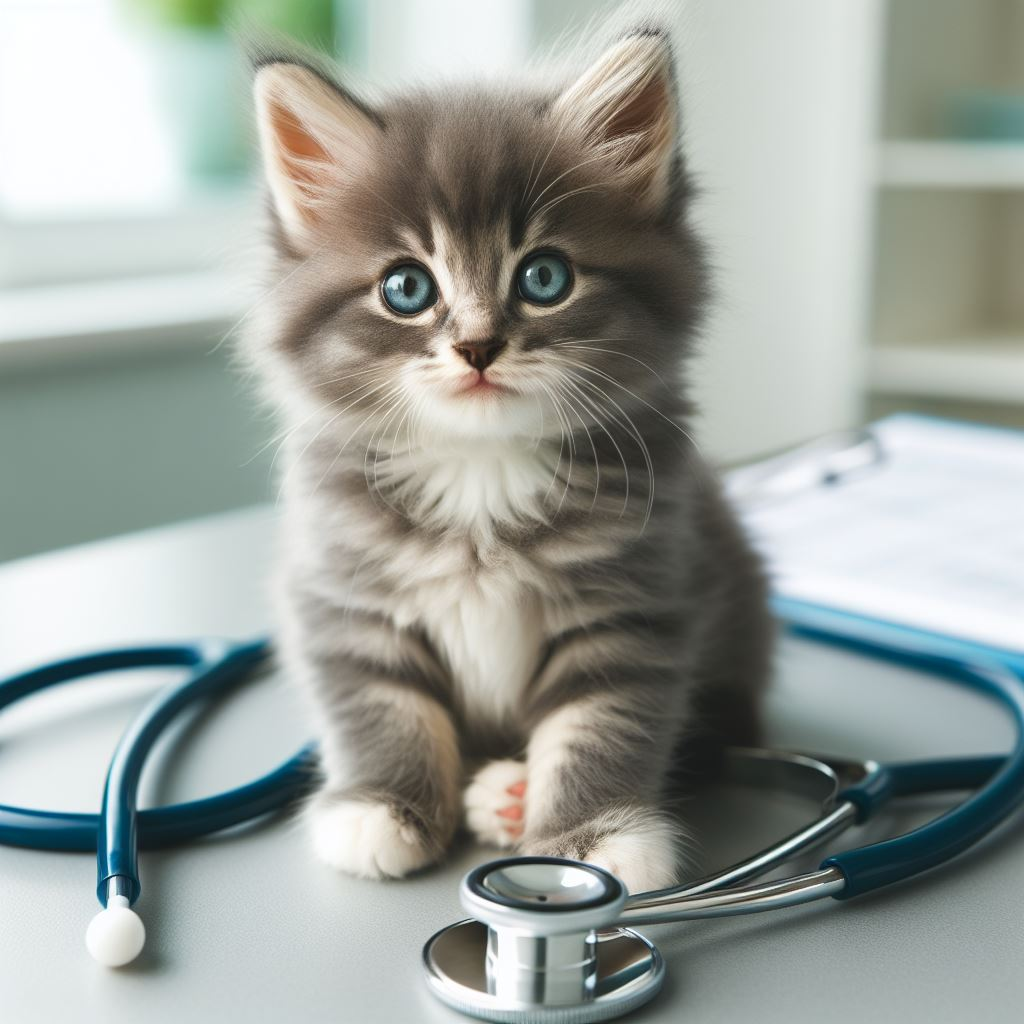
Do All Kittens Have Blue Eyes?
Why Do Baby Kittens Have Such Spellbinding Blue Eyes?

Have you ever gazed into a kitten’s eyes and found yourself mystified by their dazzling sapphire blue color? I know I have many times! But why do all kittens initially flaunt such mesmerizing peepers?
Well, the explanation is surprisingly simple yet fascinating! You see, kittens are born with blue eyes due to a temporary lack of pigmentation in their irises. When they first pry open their little lids at around 1-2 weeks old, everything is shadows and light. At this stage, blue wavelengths of light bounce off the back of their eyes, giving them that icy cool blue color. It’s almost like a defense mechanism – helping them see better while their eyes fully develop. Pretty nifty, right?
Watching Their Eyes Transform Through the Weeks
But don’t get too attached to those blue beauties – they won’t last forever! Starting at around 3 weeks old, your kitten’s eyes will begin their remarkable transformation to their destined permanent shade. This change occurs as melanocytes – special pigment cells – gradually populate their irises. The concentration and distribution of melanocytes ultimately determines the final color, vibrancy, and depth of your kitten’s eyes.
It’s incredible to witness this metamorphosis week-by-week:
- At 7 weeks, most kittens’ eyes start unveiling their true colors underneath like a magic eye puzzle.
- By 12 weeks (3 months), their eyes have typically settled into their final form, the melanocytes clearly visible.
- The most common adult eye colors are rich golden browns, sunny yellows, earthy greens, and warm glowing ambers.
Could My Kitten Defy Nature and Keep Blue Eyes?
While most kittens lose their sapphire blues during maturity, some breeds like the regal Siamese, angelic Birman, plush Ragdoll, elegant Balinese, striking Snowshoe, vocal Tonkinese, and fluffy Himalayan tend to retain their cool blue color into adulthood. This exception is due to partial albinism traits that limit the production of melanin in their eyes.
When Eye Color Changes Should Concern You
It’s normal for kittens to flit between eye colors initially. However, certain changes can indicate health issues. For example, if your kitten’s eyes turn red, puffy or swollen, it may signal nasty conditions like conjunctivitis. And if you ever notice drastic shifts in your adult cat’s eye color – rush them to the vet! Sudden alterations can flag underlying illnesses.
Unlocking the Genetic Secrets of Eye Color
Predicting your kitten’s final eye shade isn’t straightforward. Two layers in their irises – the stroma and epithelium – harbor color-defining pigment cells. More pigment concentrates into dazzling orange or gold eyes. Less pigment scatters into vibrant green eyes. And no pigment at all gives that temporary newborn blue. Generally, genetics and coat color don’t influence eye color too much. However, white-coated cats can have different-colored eyes – how cool!
The Countdown to Color Change
Here’s a handy timeline so you know what to expect during this remarkable transition:
- Kittens are born with sapphire blue eyes – no color pigments present.
- Around 3 weeks of age, their eyes commence color change.
- By 12-16 weeks, most kittens rock their permanent eye shade.
- Some kittens, however, may take up to 1 year to fully develop their destined hue!
It’s magical watching your kitten’s eyes shift and change – truly reflecting their growth and maturity. Whether they retain cosmic blues or blossom into earthy greens, amber sunsets, or gold starbursts, their eye color becomes an integral part of their unique personality.
What Next? More Feline Eye Magic Awaits!
Marveling at Rare and Unique Cat Eye Colors
Beyond the usual suspects, cat eyes can also flaunt rare mystical shades. One of the most uncommon colors is a dynamic hazel hue that shape-shifts between green, gold, and brown. Then there’s heterochromia – where one eye differs in color from the other! This can be complete heterochromia with, say, one blue and one amber eye. Or sectoral with split-colored irises. White cats frequently showcase heterochromia. But any coat can flaunt these mythical mismatched peepers!
Genetics and the Enigma of Eye Color Inheritance
Figuring out cat eye color genetics confounds even scientists! Unlike fur shades, the inheritance patterns are super complex with many unpredictabilities. Breed and family traits can sway the probabilities of certain colors. For example, Siamese lineage likely predisposes blue eyes – but even they aren’t guaranteed. And your kitten’s eye shade can completely differ from its parents’! More research is still needed to unravel this mysterious genetic code.
Caring for Your Cat’s Precious Eyes
As wondrous as your cat’s eyes may be, prioritizing their health and well-being is paramount. Regular vet check-ups can catch early issues before they stealthily progress. Watch for any color, discharge or appearance changes – these warrant immediate attention. Also, ensure balanced nutrition with eye-friendly vitamins to maintain their vitality. With conscientious care, your cat’s eyes will dazzle bright year after year!
Stay Vigilant About Adult Eye Color Changes
Unlike the natural transformations of kittens, sudden shifts in mature cats demand investigation. The emergence of odd colors or discharge can flag inflammation and sight-threatening conditions like uveitis, glaucoma, and cataracts. Some even reflect grave systemic illnesses. So, if your adult cat’s eyes change – book an urgent vet consultation. Rapid action is vision-saving!
Fun Fact Break! Cat Eyes Are Marvels of Evolution
- Cat eyes boast astonishing low light adaptations – perfect for dusk and dawn prowling!
- Their distinctive vertical pupils expertly regulate light levels entering the eyes.
- And a nifty light-enhancing membrane (tapetum lucidum) enables next-level night visions.
Concluding This Spellbinding Eye Color Odyssey
This shapeshifting eye color journey – from newborn blue to mature melanin-rich hues – is hypnotizing to witness. And at every transitional stage, your kitten’s eyes tell a unique story. Will yours retain magical blues or glisten golden, green, or amber? Each shade adds to their allure. But above all, prioritize the health of those precious peepers. With timely care, they’ll entrance you for many years ahead!


Leave a Reply